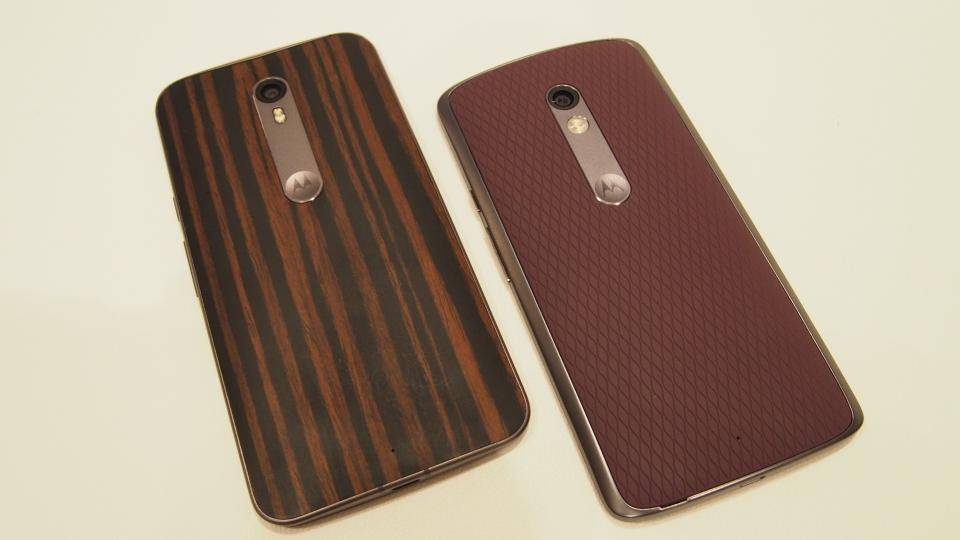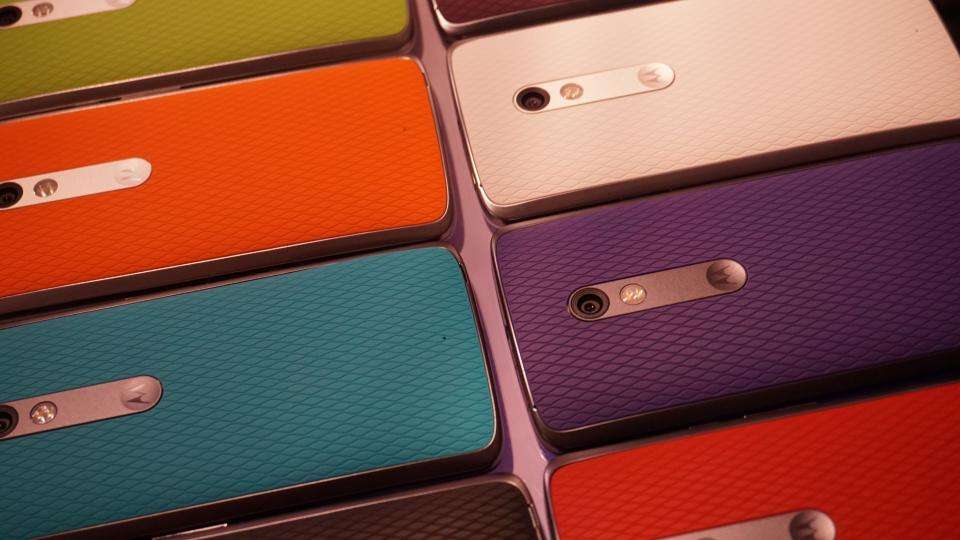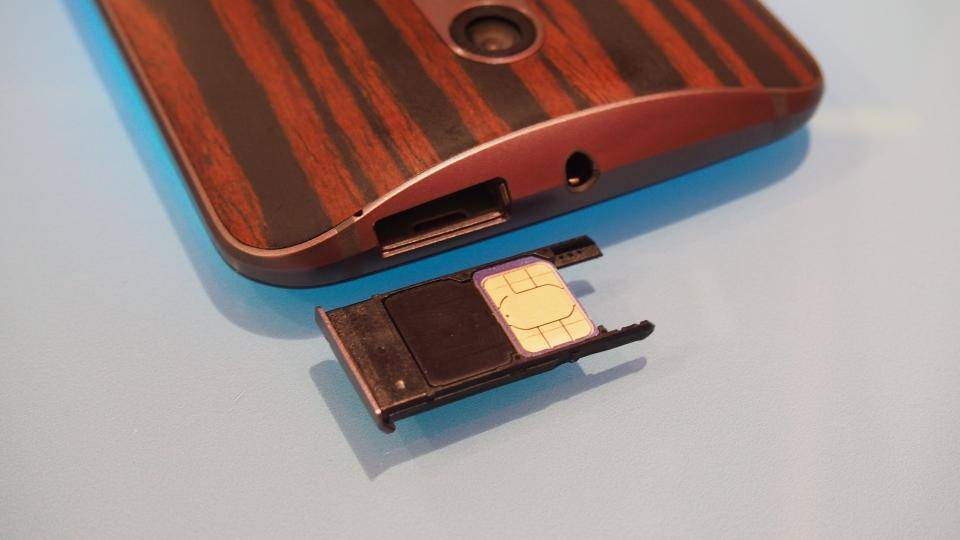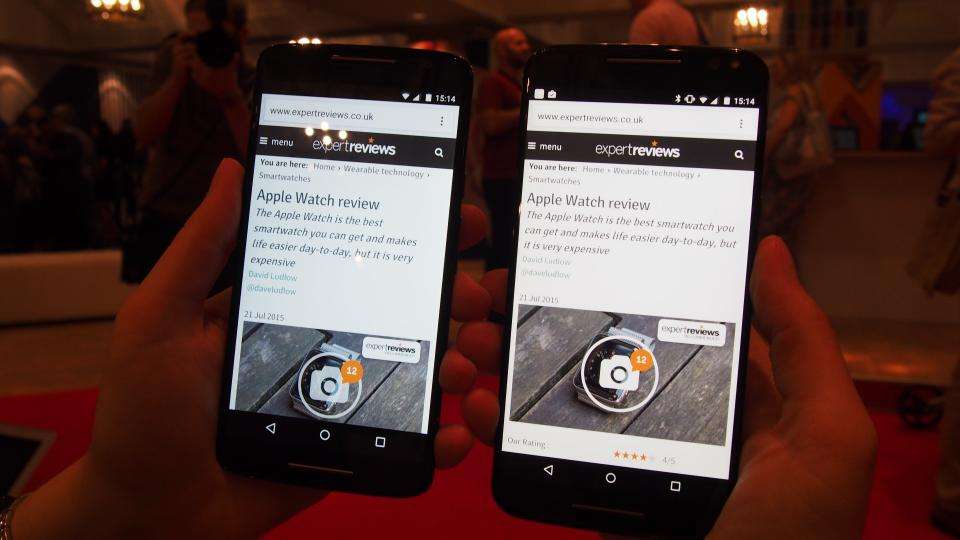The 2nd Gen Moto X was one of my favourite smartphones of 2014, but this year Motorola's doing something a little different for its top-end Moto X series. Instead of releasing one handset, Motorola has launched two models dubbed the Moto X Play and Moto X Style, and it's hoping these two smartphones will offer the same premium features as the 2nd Gen Moto X (plus a few new ones) at a price that's much kinder to your wallet.
You can read my in-depth reviews of the Moto X Play and Moto X Style for a more detailed look at what each handset has to offer, but for those of you who want a quicker breakdown of how each one squares up against the other, I've put them head-to-head to help you decide which handset you should be saving up for.
Design
The Moto X Play and Moto X Style share the same basic design. Like the 2nd Gen Moto X, both have a curved rear which sits comfortably in your palm and the same elongated metallic accent which runs between the rear camera and Motorola dimple. They both have a metal frame, too, but the Moto X Play has a removable back cover, while the Style has a sealed unibody chassis.

^ The Moto X Play (right) is essentially a 'lite' version of the Moto X Style (left)
Of course, the Moto X Style is a fraction bigger than the Moto X Play in order to accommodate its larger 5.7in screen. Measuring 153.9mm high and 76.2mm wide, the Moto X Style has an almost identical footprint to the Samsung Galaxy Note 4 , but its curved back makes it slightly fatter overall, measuring 6.1mm at this thinnest point and 11.06mm at the centre.
The Moto X Play, on the other hand, measures 148mm high and 75mm wide, with the rear tapering from 10.9mm down to 8.9mm. This is the same size as the LG G4 , making it one of the more compact 5.5in handsets on the market. This is great for those who want a large screen without the extra bulk of, say, the iPhone 6 Plus , as Motorola's economical use of the front panel means there's hardly any extraneous space, making the screen appear larger than it really is.

^ The Moto X Play will be available with a wide range of interchangeable shell grips
In reality, though, it doesn't make a huge amount of difference, as both feel equally wide in the hand. It's more difficult to reach the top of the Style one-handed, of course, due to its increase in height, but that's a common problem on most 5.7in handsets.
However, the Style's slightly narrower, more angular edges do provide a little more to hold on to than the Play, and the Style does feel like the more premium product. For instance, the smoother, more rounded corners of the Play felt slightly cheap compared to the harder edges of the Style, and the Play's softer, rubbery finish isn't quite as attractive as the narrower grooves of the Style. Still, there's a lot to like about both handsets, and both are equally comfortable to use on a day-to-day basis.
The Style and Play can both be customised using Motorola's Moto Maker service, too, allowing you to add different colour finishes and metallic accents to make it your own. With the Style, you can even add leather and smooth wood rear finishes in addition to a range of other colours. The Moto X Style will have 18 different inlays to choose from, while the Moto X Play will have 14 different backs.

^ The Moto X Style's microSD card slot is found right next to the nano SIM card slot
However, the basic model of the Moto X Style has a unique silicon rubber coating that's been specifically formulated to resist colour degradation, which should hopefully let your smartphone stay pristine for longer. The Moto X Play, on the other hand, has a plainer rear, which you'll be able to personalise with a wide range of colourful shells and flip cases.
Display
As mentioned above, the Moto X Style has a 5.7in screen, while the display on the Moto X Play is 5.5in. However, the Moto X Style has a much larger 2,560x1,440 resolution, giving it a massive overall pixel density of 515ppi - the same as the Note 4. The Moto X Play, on the other hand, only has a 1,920x1,080 resolution, giving it a lower pixel density of 400ppi.

^ Lighting conditions aren't ideal, but even here you can see the Moto X Style (right) has warmer whites than the Moto X Play (left)
In terms of clarity, you can't really tell the difference when you've got both phones side by side, as text and app icons look equally sharp on both handsets. However, now that I've had a chance to put both handsets through the Expert Reviews calibration lab, the Play has by far the superior screen.
Admittedly, the Play's overall colour accuracy is actually a fraction lower than the Style's, as our colour calibrator showed it was only displaying 91% of the sRGB colour gamut, compared to the Style's 93% coverage. However, The Play had a higher contrast ratio of 1,670:1, lower blacks at 0.36cd/m2, and much brighter, cleaner whites, with its peak brightness measuring a whopping 613.23cd/m2.
The Moto X Style, on the other hand, only reached a peak brightness of 502.07cd/m2, had higher blacks at 0.48cd/m2, and a lower contrast ratio of 1,045:1. This kind of brightness is still more than enough to see the screen clearly outside, but it does mean that images aren't quite as detailed when you view them side by side, for instance.
However, it's the Style's yellow-ish whites that really spoil the display for me, as it gives everything a very warm colour cast that makes images appear washed out and lacking in punch compared to the Moto X Play. It's almost as if the Style has an AMOLED display, as yellow whites are a common sight on this type of panel, but Motorola has since confirmed that both phones use IPS panels, making the Style even more of a disappointment. As a result, the Moto X Play wins this round hands down.
Specifications
Both phones might look very similar from the outside, but inside they're very different indeed. Starting with the Moto X Style, this is clearly Motorola's flagship device for 2015. Powered by a hexa-core 1.8GHz Qualcomm Snapdragon 808 processor and 3GB of RAM, web browsing on the Moto X Style was much faster and smoother than the Moto X Play.
In Peacekeeper, for instance, the Style steamed ahead with a score of 1,557, while the Moto X Play, which only has an octa-core 1.7GHz Qualcomm Snapdragon 615 chip and 2GB of RAM finished with 828. As a result, the Style was much more capable of handling complex pages with embedded videos, nested comments and adverts than the Play, resulting in smoother scrolling and fewer jerky animations.
The Style also pulled ahead in our Geekbench 3 tests, scoring 3,579 in the multicore test compared to the Play's score of 2,567. Of course, both phones run stock Android beautifully, but apps load much faster on the Style, and menu animations are a fraction more fluid.
Likewise, the Style is much more adept at playing games, as its impressive score of 919 frames (around 15fps) in the offscreen Manhattan test of GFX Bench GL can attest. The Play, on the other hand, barely managed 361 frames (or 5.8fps), making complex games like Hearthstone a bit more of a struggle.
Camera
Each phone has a 21-megapixel rear camera with an f/2.0 aperture, but Motorola's given the Moto X Style some considerable enhancements over the Moto X Play. Motorola says the Style has the best camera it's ever made, for instance, and its phase-detect auto-focus, closed loop processing and dual colour correlated flash should help it take faster, more accurate looking shots than its Play sibling. It can also capture Full HD video at 60fps and 4K video at 30fps, both with and without HDR.
^ The Moto X Style's 21-megapixel rear camera is much more advanced than the 21-megapixel snapper on the Moto X Play
The Moto X Play, on the other hand, only has a dual LED colour balancing flash and lacks 4K video capture. It does, however, share the Style's night mode, along with auto HDR, panorama and burst modes, as well as slow-mo video.
In our camera tests, both phones produced very good shots. Indoors, colours were bright, there was plenty of contrast and detail levels were high. However, the Play's photos were subject to a lot more noise than the Moto X Style, and the white background of our still life arrangement looked positively gritty compared with the smoother shadows of the Style. However, this did mean the Style lost out on some fine details at times, as the creases in leave in the vase and the dents on the statue weren't nearly as pronounced as the same areas on the Play photos.
^ The Moto X Style has smoother textures and less noise than the Moto X Play in low lighting conditions, but it does lose out on the finer details at times.
^ The Moto X Play, on the other hand, produced noisier images that don't look quite as pleasing 1:1, but it did capture more detail
The Style's smoothening also carried over to outdoor pictures, eliminating the noise present in large expanses of sky on the Moto X Play. However, whereas indoor shots suffered a slight shortage of detail on the Style, outdoor shots seemed sharper and less grainy than those I took on the Play. Building details were sharper and more pronounced and brickwork was less smudged.
^ Outdoors, photos looked great on the Moto X Style, as noise levels were extremely low and fine details were all present and correct
^ The Moto X Play, on the other hand, struggled to capture the same amount of detail as the Style, as outdoor photos looked grittier and noisier
Battery Life
Large phones usually mean large batteries, but the Moto X Style actually has a smaller 3,000mAh battery compared to the Play's massive 3,360mAh battery. As a result, the Moto X Play lasted longer in our continuous video playback test when the screen brightness was set to 170cd/m2. However, I wasn't quite prepared for how much longer it would last, as the Moto X Style barely lasted nine hours, bottling out at 8h 54m. The Moto X Play, on the other hand, lasted a much more respectable 13h 08m.
The latter is much more in keeping with what I'd normally expect from a battery of this size, but the Style's battery life is just plain disappointing, not to mention a pretty big deal breaker as far as I'm concerned. It's no good having a faster phone with a better camera if it's not reliable, but I'll be keeping an eye on how the Style fares more generally in everyday use over the coming days to see if it fares any better away from our standard tests.
^ The Moto X Play has a removable back cover, but the metallic strip down the back makes it tricky to access the battery
The good news is that both phones support Motorola's new Turbo Charge feature, which lets you get an impressive number of hours charge from just a short time on the mains. According to Motorola, the Moto X Style charges up to 50% faster than the Samsung Galaxy S6 , allowing you to get 10 hours of general use from just 15 minutes charge. The Moto X Play isn't far behind either, giving you 8 hours of battery in the same amount of time.
Storage
The Moto X Play is available with 16GB of internal storage as standard, or you can opt for 32GB if you choose a Moto Maker version. The Moto X Style, meanwhile, comes with 32GB but can be upgraded to 64GB. However, when both phones have support for microSD cards, paying extra for more storage seems like a bit of a waste, especially when you could put that money toward a 128GB microSD card, for example.
Price and Verdict
The Moto X Play costs £279 SIM-free and contracts start at around £22-per-month. The Moto X Style , on the other hand, starts at £399 SIM-free, while contracts start at £32-per-month. That makes the Moto X Style quite a lot more than the Moto X Play over the course of two years, and I'm not sure its mediocre screen and disappointing battery life are worth the upgrade. Yes, the Style is faster and takes better pictures, but battery life is a big concern for me, making the Play the more attractive prospect.
Likewise, Moto X Play has a much more attractive and accurate display than its big brother, and its interchangable back covers make its design more flexible over the long term. The Moto X Style is still a decent phone, but when you can get the Samsung Galaxy S6 for the same price on contract and only £50 more SIM-free, it just isn't as good value as the Play. The Play, on the other hand, utterly dominates its respective price category (if you can't get hold of a OnePlus 2 , that is), making it the Moto X to buy for 2015.











